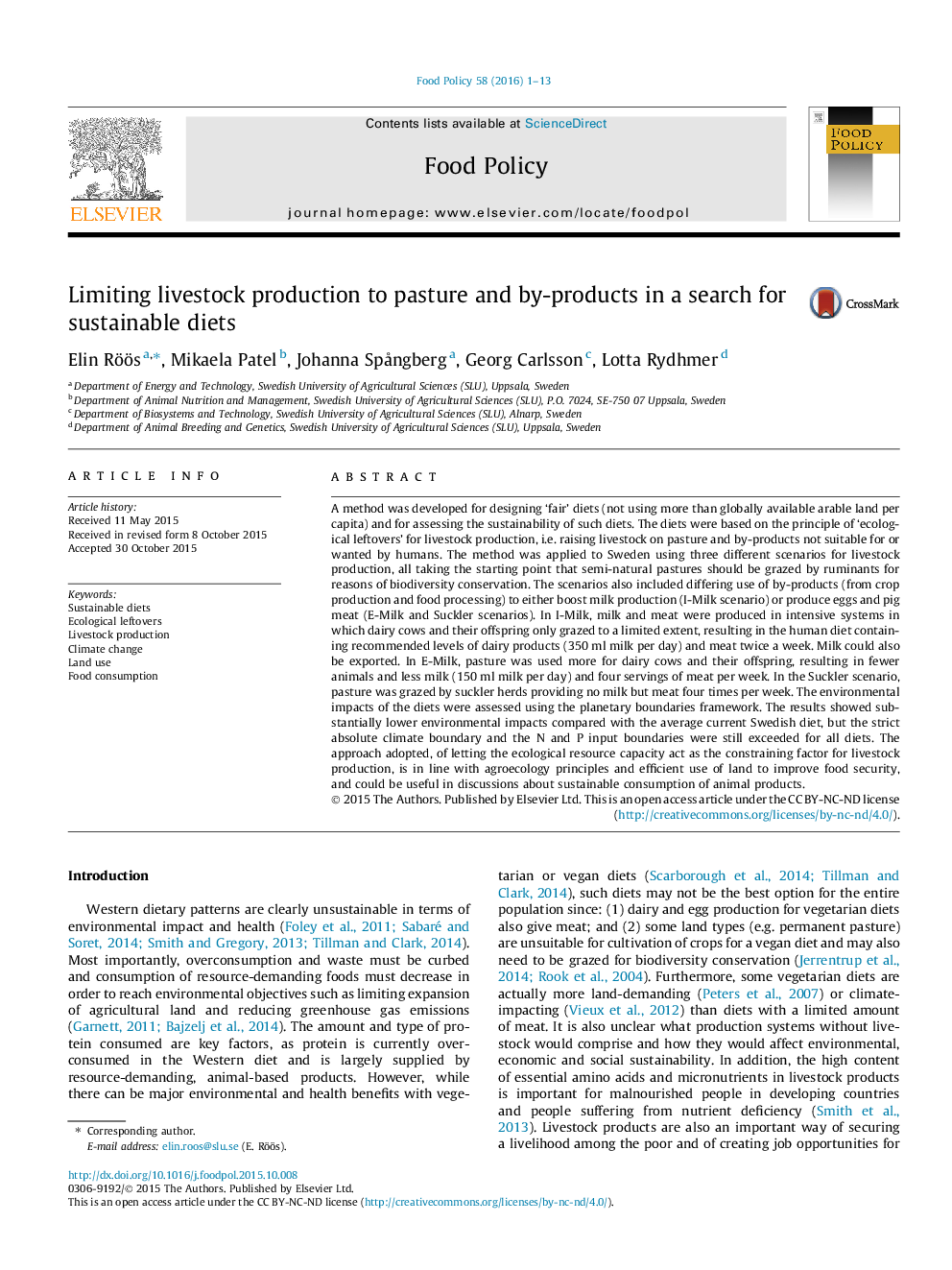| کد مقاله | کد نشریه | سال انتشار | مقاله انگلیسی | نسخه تمام متن |
|---|---|---|---|---|
| 5070264 | 1477018 | 2016 | 13 صفحه PDF | دانلود رایگان |
عنوان انگلیسی مقاله ISI
Limiting livestock production to pasture and by-products in a search for sustainable diets
ترجمه فارسی عنوان
محدود کردن تولید دام به مزارع و محصولات جانبی در جستجوی رژیم های پایدار
دانلود مقاله + سفارش ترجمه
دانلود مقاله ISI انگلیسی
رایگان برای ایرانیان
کلمات کلیدی
رژیم های پایدار، باقی مانده های زیست محیطی، تولید دام، تغییر آب و هوا، استفاده از زمین، مصرف مواد غذایی،
موضوعات مرتبط
علوم زیستی و بیوفناوری
علوم کشاورزی و بیولوژیک
دانش تغذیه
چکیده انگلیسی
A method was developed for designing 'fair' diets (not using more than globally available arable land per capita) and for assessing the sustainability of such diets. The diets were based on the principle of 'ecological leftovers' for livestock production, i.e. raising livestock on pasture and by-products not suitable for or wanted by humans. The method was applied to Sweden using three different scenarios for livestock production, all taking the starting point that semi-natural pastures should be grazed by ruminants for reasons of biodiversity conservation. The scenarios also included differing use of by-products (from crop production and food processing) to either boost milk production (I-Milk scenario) or produce eggs and pig meat (E-Milk and Suckler scenarios). In I-Milk, milk and meat were produced in intensive systems in which dairy cows and their offspring only grazed to a limited extent, resulting in the human diet containing recommended levels of dairy products (350Â ml milk per day) and meat twice a week. Milk could also be exported. In E-Milk, pasture was used more for dairy cows and their offspring, resulting in fewer animals and less milk (150Â ml milk per day) and four servings of meat per week. In the Suckler scenario, pasture was grazed by suckler herds providing no milk but meat four times per week. The environmental impacts of the diets were assessed using the planetary boundaries framework. The results showed substantially lower environmental impacts compared with the average current Swedish diet, but the strict absolute climate boundary and the N and P input boundaries were still exceeded for all diets. The approach adopted, of letting the ecological resource capacity act as the constraining factor for livestock production, is in line with agroecology principles and efficient use of land to improve food security, and could be useful in discussions about sustainable consumption of animal products.
ناشر
Database: Elsevier - ScienceDirect (ساینس دایرکت)
Journal: Food Policy - Volume 58, January 2016, Pages 1-13
Journal: Food Policy - Volume 58, January 2016, Pages 1-13
نویسندگان
Elin Röös, Mikaela Patel, Johanna SpÃ¥ngberg, Georg Carlsson, Lotta Rydhmer,
